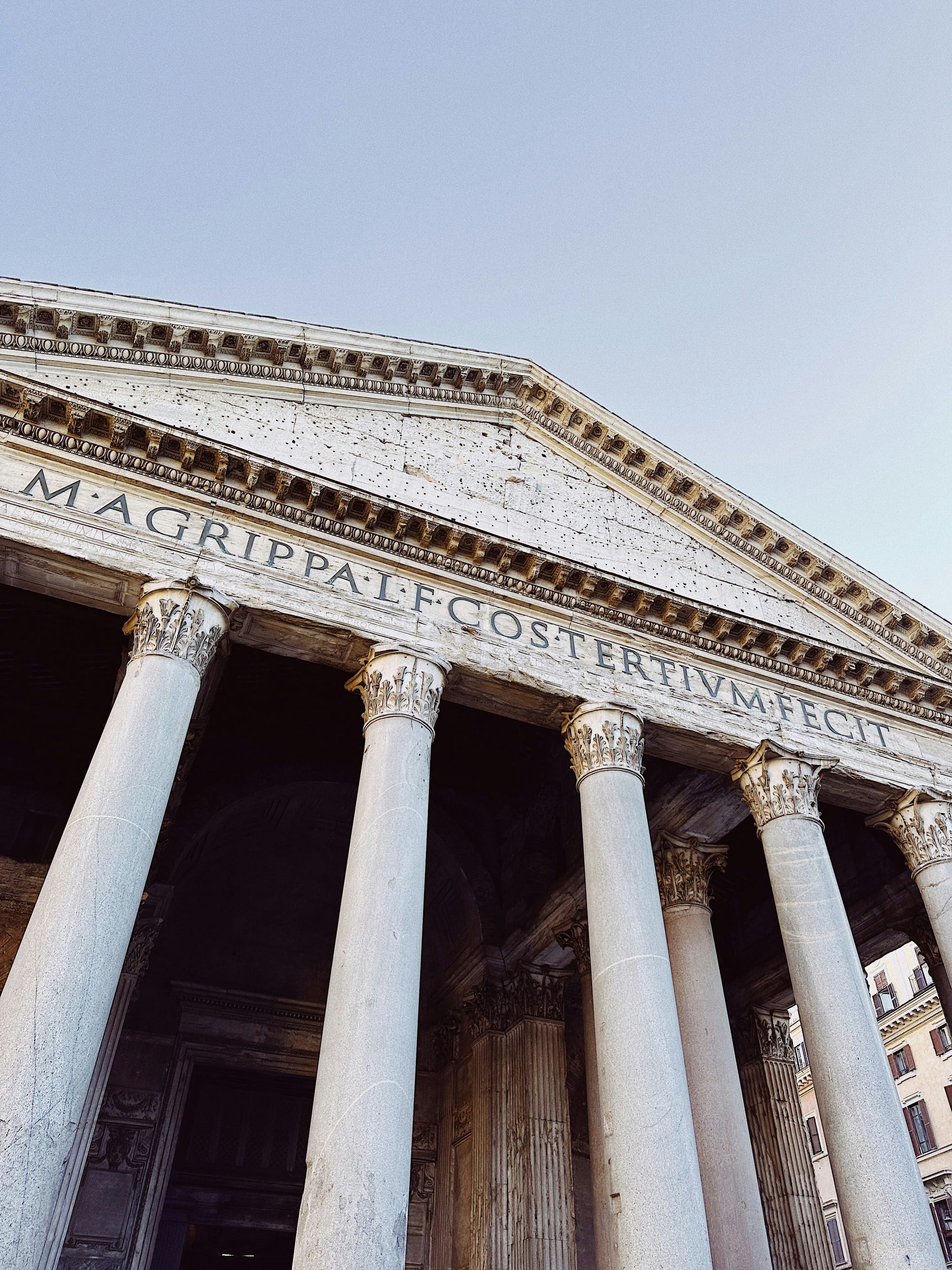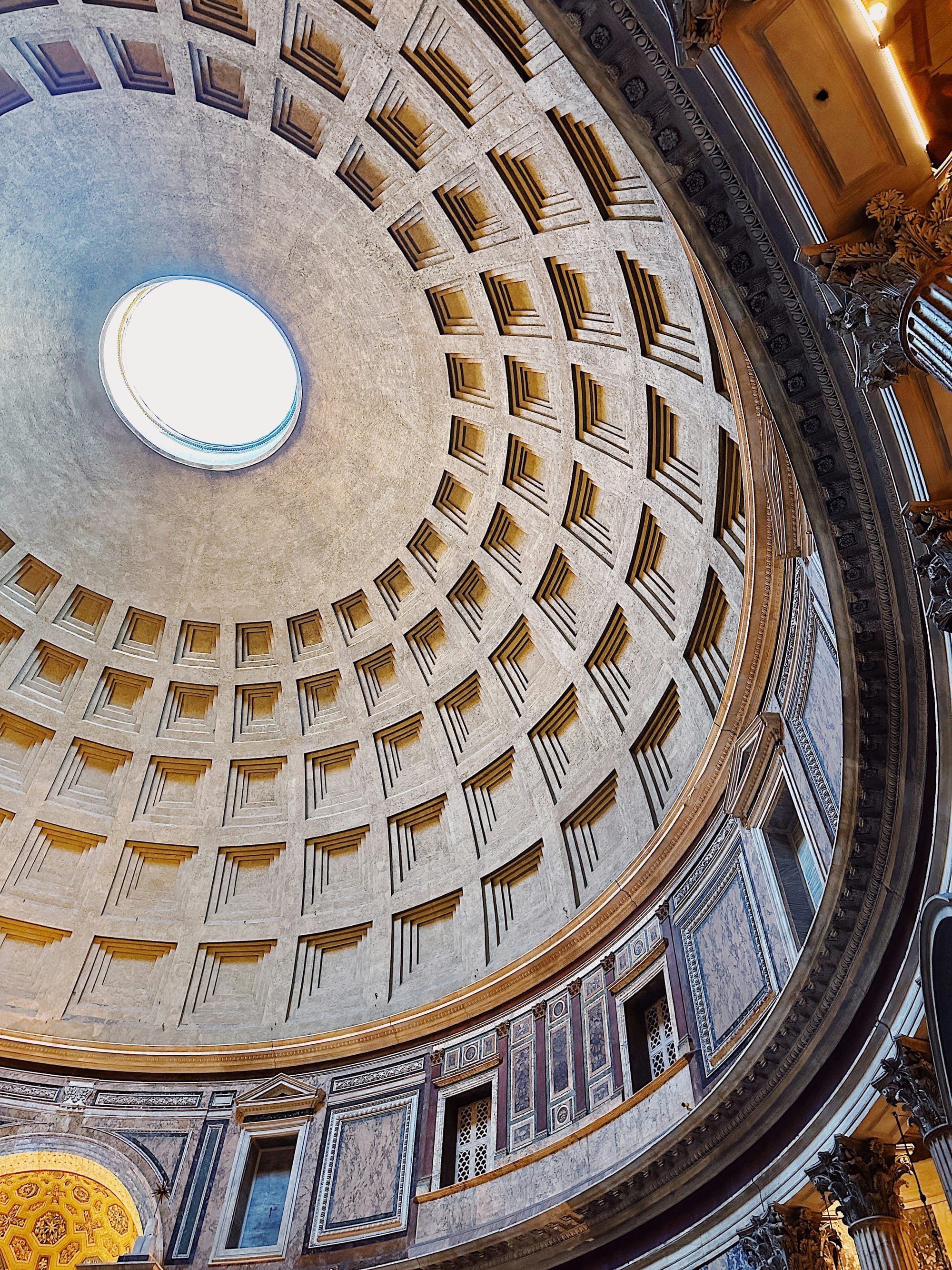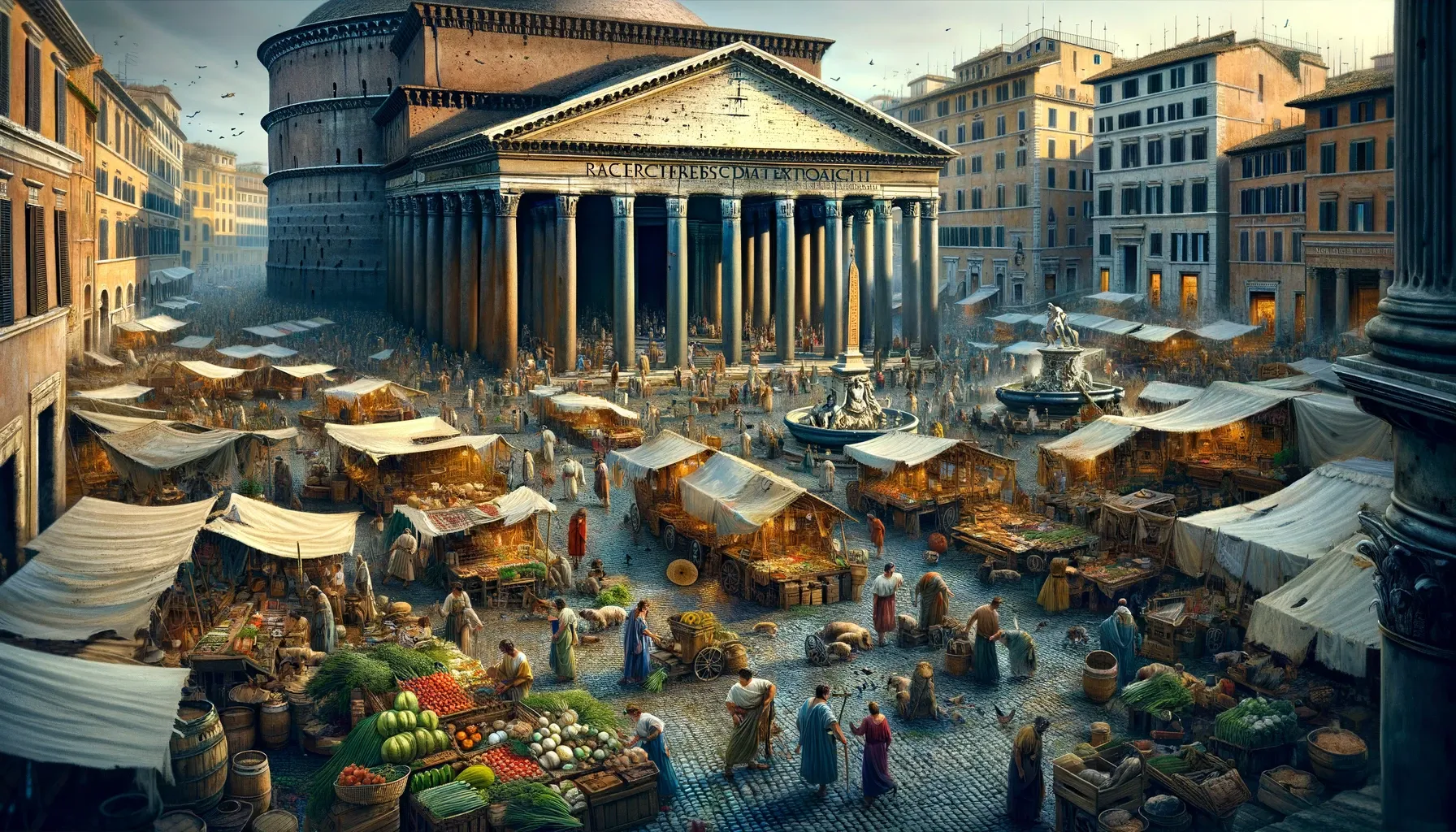Things about the Pantheon of Rome you did not know
In the heart of Rome, an architectural marvel has stood the test of time: the Pantheon. Known for its colossal dome the Pantheon holds secrets and stories that transcend its physical allure.

In the heart of Rome, an architectural marvel has stood the test of time, embodying the ingenuity and grandeur of ancient Roman civilization—the Pantheon. Known for its colossal dome and as the resting place of Renaissance artists and Italian kings, the Pantheon holds secrets and stories that transcend its physical allure.
A Temple of Many Gods
Constructed between AD 118 and 125 under Emperor Hadrian, the Pantheon succeeded an earlier temple commissioned by Marcus Agrippa during the reign of Augustus (27 BC – 14 AD). Despite its Christian consecration in the 7th century, the Pantheon's name, derived from the Greek words "pan" (all) and "theos" (god), hints at its original purpose—to honor all Roman gods. The inscription on the façade, "M·AGRIPPA·L·F·COS·TERTIVM·FECIT," pays homage to its Agrippan origins, misleading some into attributing the entire structure to him.
Despite the inscription declaring "Agrippa made this," the structure visible today was not constructed by Agrippa, nor does it bear any resemblance to Agrippa's original building. What we see today, is the third version of the Pantheon.
M·AGRIPPA·L·F·COS·TERTIVM·FECIT
Marcus Agrippa, son of Lucius, made this building when consul for the third time.

The original temple, constructed by Agrippa between 27-25 BC, succumbed to a fire in 80 AD. Subsequently, Emperor Domitian rebuilt the temple, only for it to meet its demise again in 110 AD, allegedly destroyed by a lightning strike and subsequent fire. The current edifice, erected in 126 AD by Emperor Hadrian, showcases advanced architectural and engineering practices of the time. Out of respect for Agrippa, Hadrian chose not to inscribe his own name on the monument, maintaining the original dedication.
This decision led to historical ambiguity, with the Pantheon being mistakenly attributed to Agrippa as late as 200 AD. Clarification only came in the early 19th century when excavations unearthed bricks dated to Hadrian's reign, finally crediting him as the true architect.
An Architectural Wonder
The Roman Empire and the Romans in general, had a keen interest in symmetry and spatial dynamics.
Did you realize that a sphere measuring 142 feet across could seamlessly fit within the Pantheon? This precision is due to the interior's height from the floor to the oculus and its circular diameter both being 142 feet. Similarly, the Pantheon's entire interior could snugly fit into a cube with each side measuring 142 feet.
This concept of a sphere within a cylinder reflects one of Archimedes' significant mathematical findings, illustrating the 2:3 ratio theory regarding the volume relationship between a sphere and a cylinder.
As a result, the dome's base begins at the midpoint of the structure's height, with a third of the dome extending into the supporting drum.

The Pantheon's dome is the largest unreinforced concrete dome in the world to this day and is a testament to the advanced engineering skills of the Romans. Its diameter and height from the floor to the oculus (the central opening), as mentioned above, are exactly the same—142 feet—creating a perfect sphere. The oculus, serving as the building's only light source, symbolizes the connection between the temple and the heavens. Remarkably, the concrete used in the dome gets lighter with height, utilizing materials like pumice in the upper tiers to reduce pressure on the walls below.
The Oculus: A Gateway to the Heavens
The oculus is not merely an architectural feature; it also plays a significant role in the Pantheon's interaction with the natural world. On the equinoxes, when the sun is directly over the equator, its rays shine through the oculus and illuminate the entrance door, highlighting the Romans' awareness of celestial phenomena. Additionally, during rainstorms, the Pantheon becomes a spectacle as raindrops fall through the oculus, creating a unique scene as they disappear into the floor's drainage system, designed to handle the water ingress.
A Resting Place for the Illustrious
While the Pantheon is renowned as a feat of ancient architecture, it also serves as the final resting place for notable historical figures. Renaissance artist Raphael and Italian kings Vittorio Emanuele II and Umberto I, along with Umberto's queen, Margherita, are entombed within its walls. This transformation from a pagan temple to a revered burial site underscores the Pantheon's significance in Italian cultural and political history.
The Eternal Temple
The Pantheon's enduring nature is attributed not only to its robust construction but also to its continuous use throughout history. Unlike many ancient Roman structures that fell into ruin, the Pantheon was consecrated as a Christian church in AD 609, which played a crucial role in its preservation.
This ancient temple has been preserved so well that envisioning its original splendor is not a challenge. Virtually the entire interior remains as it was, offering a view today that's remarkably similar (barring the Christian additions and the absence of Roman artifacts) to what would have greeted an ancient Roman stepping inside this majestic structure nearly two millennia ago.
Most of the damage has occurred to the exterior, where its facade has been stripped of marble and metals like bronze, repurposed for various constructions in Rome throughout the Medieval and Renaissance periods.
The well-known saying, “quod non fecerunt barbari, fecerunt Barberini” – translating to “What the barbarians didn’t do, the Barberini did” – encapsulates this sentiment.
The Barberini, the affluent family of Pope Urban VIII in the 17th century, removed the bronze ceiling of the portico to cast cannons (though it’s also said that the bronze contributed to the creation of Bernini’s renowned baldachino – the immense canopy over the altar in St. Peter’s Basilica).
The vibrant square facing the monument is known as Piazza della Rotonda—an appellation that mirrors the church's informal medieval moniker, Santa Maria Rotonda, inspired by its circular ("rotund") structure, despite the square itself being rectangular.

Piazza della Rotonda draws crowds of tourists and locals alike, who revel in leisurely dining at its alfresco eateries and spend time on the steps of its central fountain, engaging in relaxation, people-watching, and monument admiring. However, this famed square wasn't always the welcoming and tidy space it is today.
For centuries, the monument bore witness to a displeasing spectacle: a chaotic mix of taverns, inns, sheds, and shops cluttering its surroundings, with vendors (both authorized and not) peddling an assortment of goods from vegetables to birds and poultry. The area was marked by offensive smells from the stalls, slippery walkways smeared with grime, and the presence of thieves targeting the populace.
PIVS · VII · P · M · AN · PONTIFICATVS · SVI · XXIII ·
AREAM · ANTE · PANTHEON · M · AGRIPPAE IGNOBILIBVS · TABERNIS
DEMOLITIONE · PROVIDENTISSIMA
AB · INVISA · DEFORMITATE · VINDICAVIT
ET · IN · LIBERVM · LOCI · PROSPECTVM · PATERE · IVSSIT
===
Pius VII Supreme Pontiff, in the 23rd Year of His Pontificate the 23rd,
freed the area of the Pantheon of Marcus Agrippa
of the ignoble businesses by undertaking a very thoughtful program of demolition
to render clear the view of the site.
The persistent presence of unauthorized sellers and the occasional pickpocket has been a constant through the square's history, never entirely disappearing.
The distasteful market that once dominated the square was eventually cleared away, and the area rejuvenated in the early 19th century by Pope Pius VII, who commemorated his efforts to clean up the space with a large plaque on the wall of a building facing the Pantheon—a historical marker visitors can still view today.
The Pantheon, Rome, c. 125 Speakers: Dr. Beth Harris, Dr. Steven Zucker. Created by Beth Harris and Steven Zucker.





About the Roman Empire Times
See all the latest news for the Roman Empire, ancient Roman historical facts, anecdotes from Roman Times and stories from the Empire at romanempiretimes.com. Contact our newsroom to report an update or send your story, photos and videos. Follow RET on Google News, Flipboard and subscribe here to our daily email.
Follow the Roman Empire Times on social media: